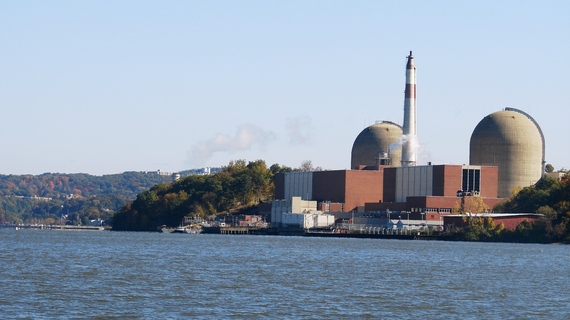The Nuclear Regulatory Commission is investigating possibly major lapses in security at the Indian Point nuclear power plants, including the prospect that criminal elements are using parts of the plants' drills for their own training.
Records show that for more than a decade, officials at Indian Point have largely ignored instances where their internal security communications system was compromised and blocked by outside individuals. Whether the deliberate jamming of security communications is a decade-long prank or the result of individuals or groups using Indian Point safety drills as opportunities to test their own ability to cause mayhem during a terrorist attack is not known.
But the fact that deliberate jamming by "an individual or group of individuals" was first reported in 2003 by James Lee Witt in his analysis of emergency planning on behalf of the State of New York and has continued intermittently to the point where it forced the cancellation of emergency drills in November 2012 has prompted an investigation by the NRC.
Indeed, those who have hacked into Indian point's security have lately become so brazen that they have recorded instructions made by plant security officials at the beginning of drills, and then jammed the network's receivers by replaying those instructions over and over, according to participants, thus blocking any further use of the compromised security network. And the electronic intruders were apparently operating within a mile or two of the plant site.
The latest allegations were the most potentially explosive in a series of failures outlined by two former security officers -- Lt. Skip Travis and Lt. Jason Hettler -- in a suit filed in U.S. District Court in August against Entergy Nuclear, which owns the twin Indian Point plants in Westchester County some 25 miles from Manhattan. A spokesman for Entergy declined to discuss the subject.
There is no evidence in the public NRC record that there have been any problems with security operations or drills at the plant site in bucolic Buchanan, along the banks of the Hudson River about 10 miles south of West Point. The agency's January, 2013 evaluation of Indian Point 2 and 3 gave the plants "green" or top ratings in every category, including security.
Indeed, despite a litany of complaints against the security operation at the plant, the NRC has noted but done little about problems delineated in the suit, including:
• The falsification of work logs and fitness for duty reports, thus allowing security personnel to exceed the maximum permitted work hours per week despite being fatigued.
• Jeopardizing the effectiveness of Force on Force drills by informing the security personnel of what routes the "invaders" would take to attack the plant.
• A faulty perimeter detection system, which made it impossible for defenders to know where "terrorists" were breaking into the plant site and where they were on the grounds. As a result of being technologically blind during a drill monitored by the NRC on October 11, 2011, the suit states "all of the 'terrorists' successfully breached the perimeter and the identified target sets located inside of Indian Point and succeeded in causing a total nuclear meltdown. Not one terrorist was killed by any security personnel during the drill."
• A combination of faulty detection equipment and internal communications allowed "terrorists" to succeed in in reaching all of their targets in an NRC-monitored, Force on Force drill in April, 2013. Hettler and Travis contend that had the April drill "been an actual terrorist attack, the 20 million individuals who live and work in the 50-mile radius meltdown zone would have perished."
• An absence of backup power for the internal communications system. As a result, the security force could not communicate during station blackout conditions.
Agency spokesman Neil Sheehan said in an email note that "the NRC is aware of the issues raised in the filing. The agency is evaluating all of the plant safety and security issues described in the lawsuit that are under our jurisdiction. The NRC has an extensive plant oversight program to ensure that facility's owner adequately adheres to federal safety and security requirements."
Ever since the 9/11 terrorist attacks the NRC has had strict rules regarding what is public and what is considered "safeguard" information that cannot be released. According to the official 9/11 Report, Indian Point was scouted and selected as a backup target to the twin towers of the World Trade Center, whose upper floors may have been obscured had the region been blanketed with rain or fog. The Hudson River Flyway serving the region's airports, on the other hand, begins just 500 feet above the water. The twin domes of Indian Point, jutting more than 300 feet in the air in the middle of a bend in the river, would be hard to miss even in bad weather.
Continue reading at Energy Matters.

